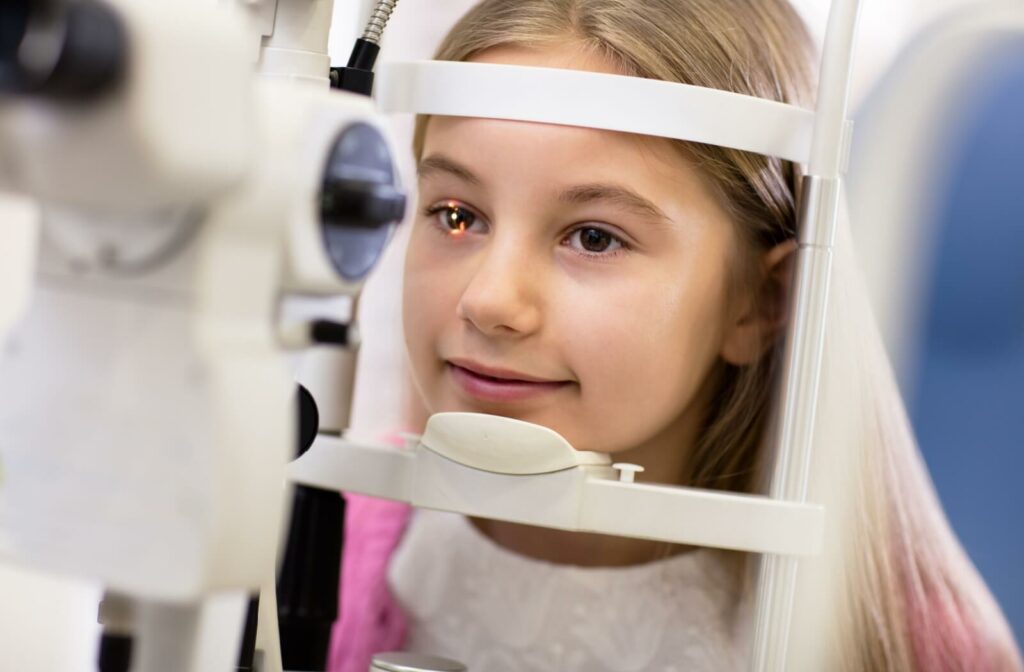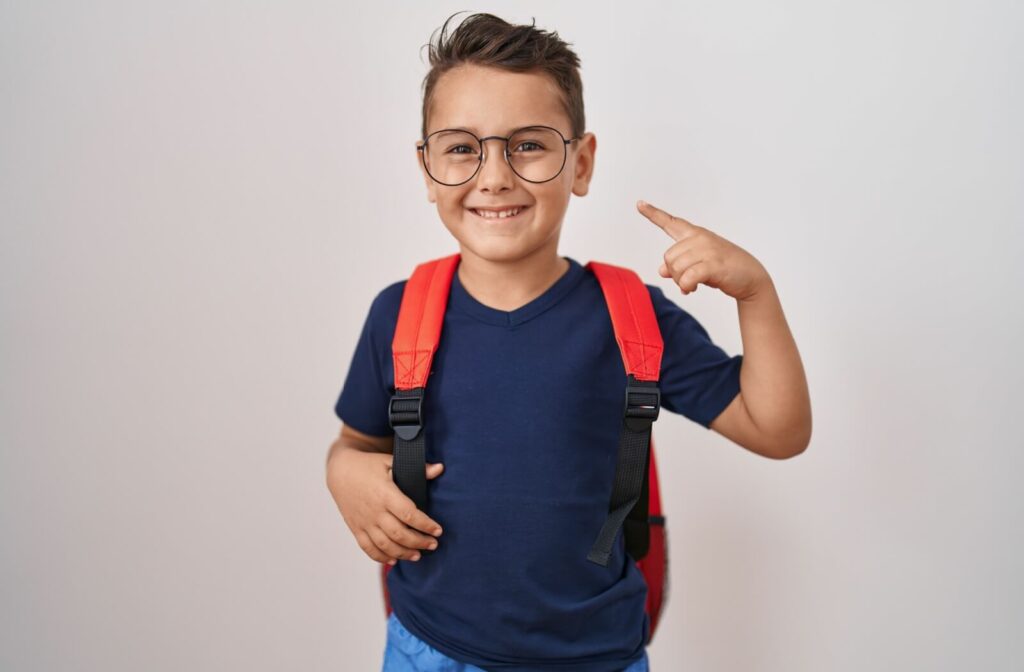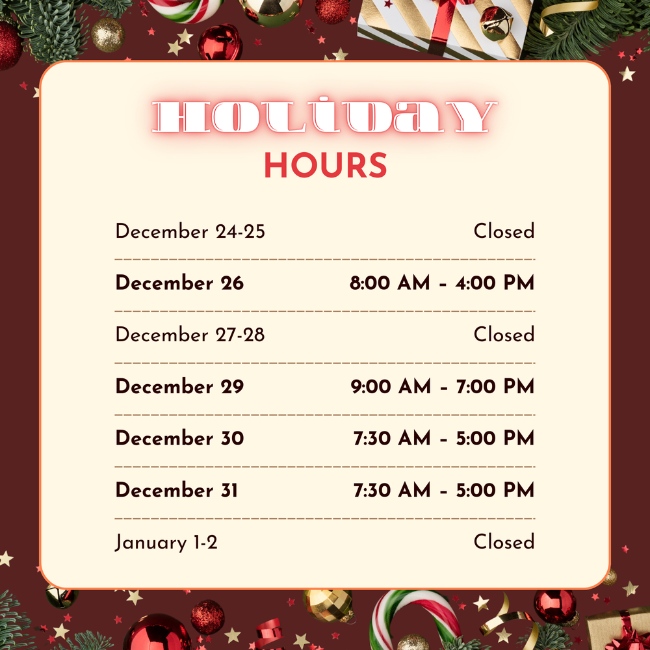Your children are an invaluable treasure and their health is of critical importance. We also understand that addressing concerns about your child’s eyesight can sometimes be overwhelming. When should they have their first eye exam? How frequently? What if they might need treatment sooner? It’s a lot of questions—and we’re here to support you in answering them!
Your child should have their first eye exam around 6 months, the next at 3 years old, then every year until they’re 18. This is a general guideline, as each child is unique. For example, more frequent visits may be necessary if your child requires glasses.
The Basics of Children’s Eye Health
Children often don’t have a frame of reference for what “normal” vision should be, so they might not always express when something’s wrong. Watch for signs and symptoms that suggest your child has trouble with their eyesight. Your attentive care can make a big difference. Some common conditions that can affect their vision include:
- Amblyopia (Lazy Eye): This condition occurs when one eye does not develop proper vision, leading to poor visual acuity.
- Strabismus (Crossed Eyes): This happens when the eyes do not align properly, which can lead to issues with depth perception.
- Refractive Errors: These include myopia (nearsightedness), hyperopia (farsightedness), and astigmatism, which involve the way light rays focus on the retina.
Early detection and treatment of these conditions can prevent long-term vision problems and support your child’s ability to perform well in school and other activities.
Frequency of Eye Exams for Different Age Groups
Regular eye exams are important as children grow. Here are some guidelines based on age groups:
Infants to Toddlers (Birth to 2 Years)
A child’s early years are critical for detecting and treating conditions like amblyopia (lazy eye) and strabismus (crossed eyes), which can impact vision development. Early detection leads to proactive treatment, and some of these early vision problems are easy to solve while your child is young.
Children should have their first eye exam around 6 months, and no later than 12 months.
Preschoolers (3 to 5 Years)
Much of our learning is visual, so before kids start school, it’s essential to examine the visual skills that could impact their classroom time. Early intervention can correct vision problems affecting focusing, eye alignment, or depth perception.
Children should have another eye exam between 3 and 5 years of age.
School-Age Children (6 to 17 Years)
Regular exams help vision remain sharp, supporting academic performance and daily activities. Children’s eyes constantly change, which means eye conditions can appear and progress rapidly. Monitoring their eye health and updating prescriptions as needed can prevent vision-related challenges in school.
Children between 6 to 17 should get an eye exam annually, or more frequently if recommended by their optometrist.
What Happens at a Children’s Eye Exam?
Whenever you bring your family in for an eye exam, our compassionate optometrists meticulously evaluate your overall eye health. We recognize that signs of eye problems can be subtle, and children may struggle to articulate vision issues. This is why a comprehensive eye exam is crucial for early diagnosis of potential conditions.
For a children’s eye exam, we focus on assessing essential visual skills, such as:
- Visual acuity
- Depth perception
- Eye muscle control
- Hand-eye coordination
- Color vision
For infants and toddlers, we gently assess general eye health, examining pupil response, eye muscles, and focusing ability. At this developmental stage, vision is integral to learning and growth. These tests help our optometrists identify potential vision problems that could impact your child’s development since some could be misdiagnosed as other issues like ADHD.
Our tests might include reading letters off a chart, tracking moving objects, or using a color plate for color vision. If necessary, we can prescribe suitable corrective eyewear, such as glasses or contact lenses.

Signs Your Child Might Need an Eye Exam Sooner
Even with regular eye exams, certain signs might indicate a need for an immediate checkup. Watch out for these common symptoms that may mean your child has trouble seeing clearly:
- Frequent squinting or blinking
- Sitting too close to the TV or holding books close to the face
- Complaints of headaches or eye pain
- Difficulty concentrating or reading
- Eye rubbing
- Misaligned eyes
- Trouble following objects or people with their eyes
- Red, itchy, or watery eyes
- Any eye discharge
If you notice any of these symptoms, seek an eye exam outside of the regular schedule. In addition to regular eye exams, there are several ways to help safeguard your child’s vision:
- Ensure your child eats a nutritious diet rich in fruits and vegetables
- Encourage outdoor activities to benefit their eyesight
- Use protective eyewear during sports or activities that pose a risk of eye injuries
- If your child needs corrective eyewear, show them how to properly care for their glasses or contact lenses.
We’ll See You at Your Next Eye Exam in Verona
Eye exams are about more than just your child’s vision; they encompass their overall well-being and ability to learn, play, and explore the world around them. These exams help them capture those magical moments when they spot a rainbow after a rainstorm or read their favorite book for the hundredth time.At Verona Vision Care, we’re dedicated to helping children see the world clearly and comfortably. If it’s time for your child’s next eye exam, we invite you to book an appointment with us. Our team prioritizes personalized care and is committed to supporting your child’s vision—now and into the future.




